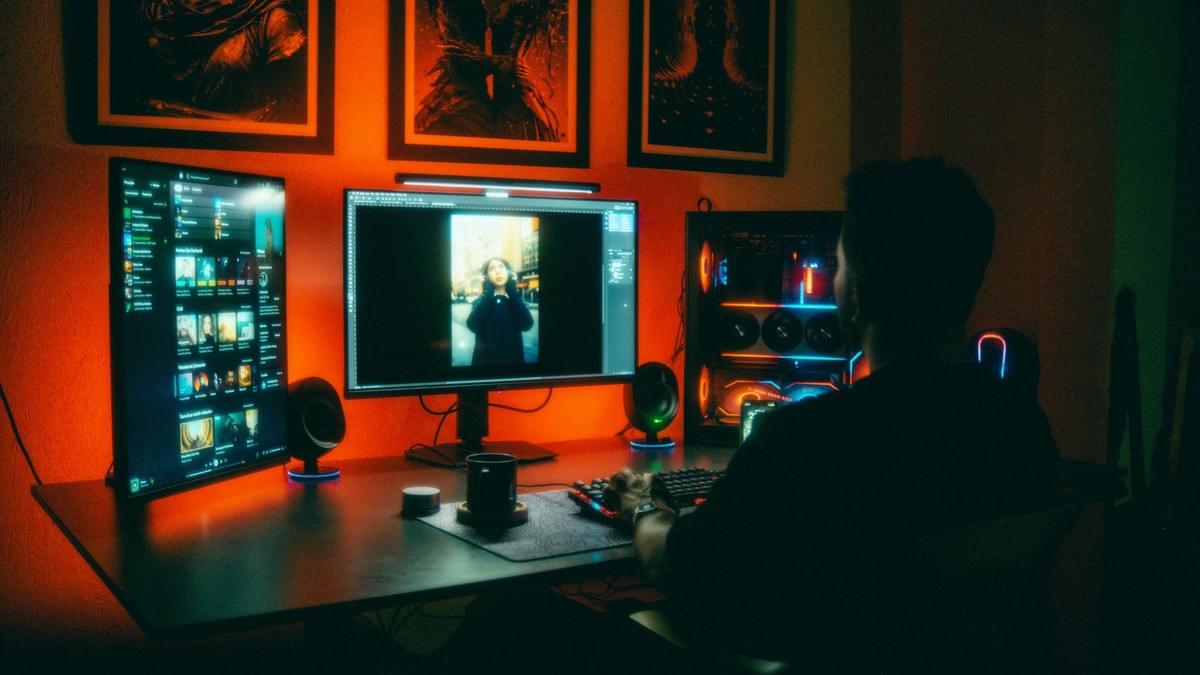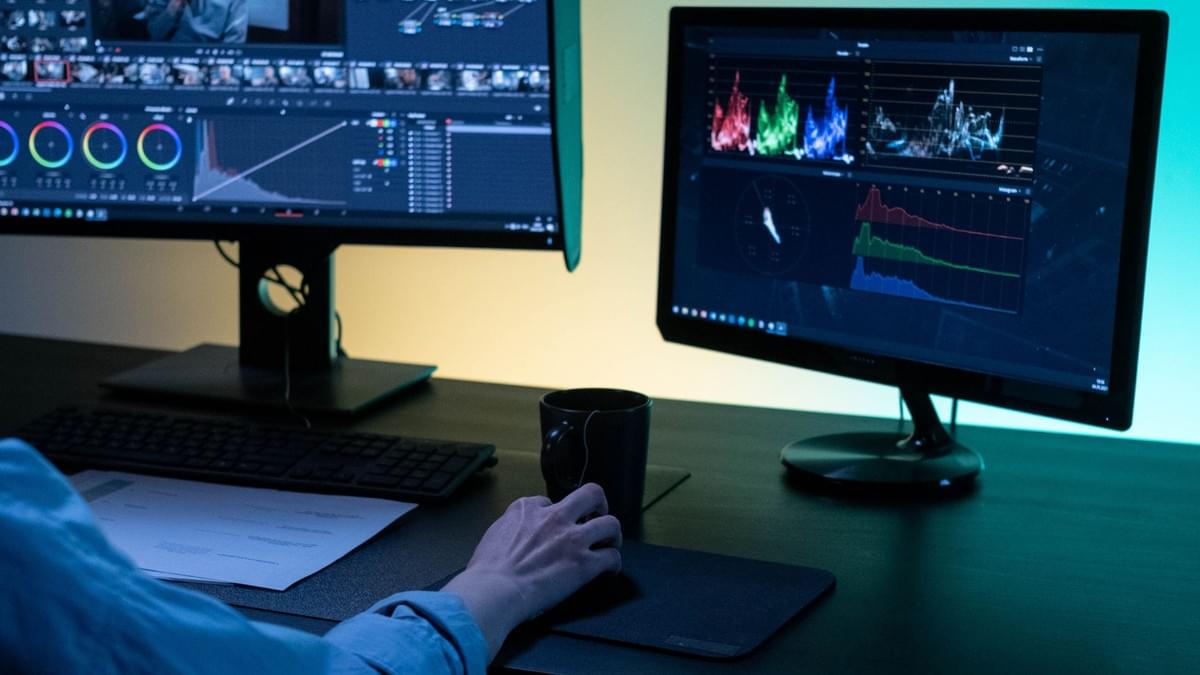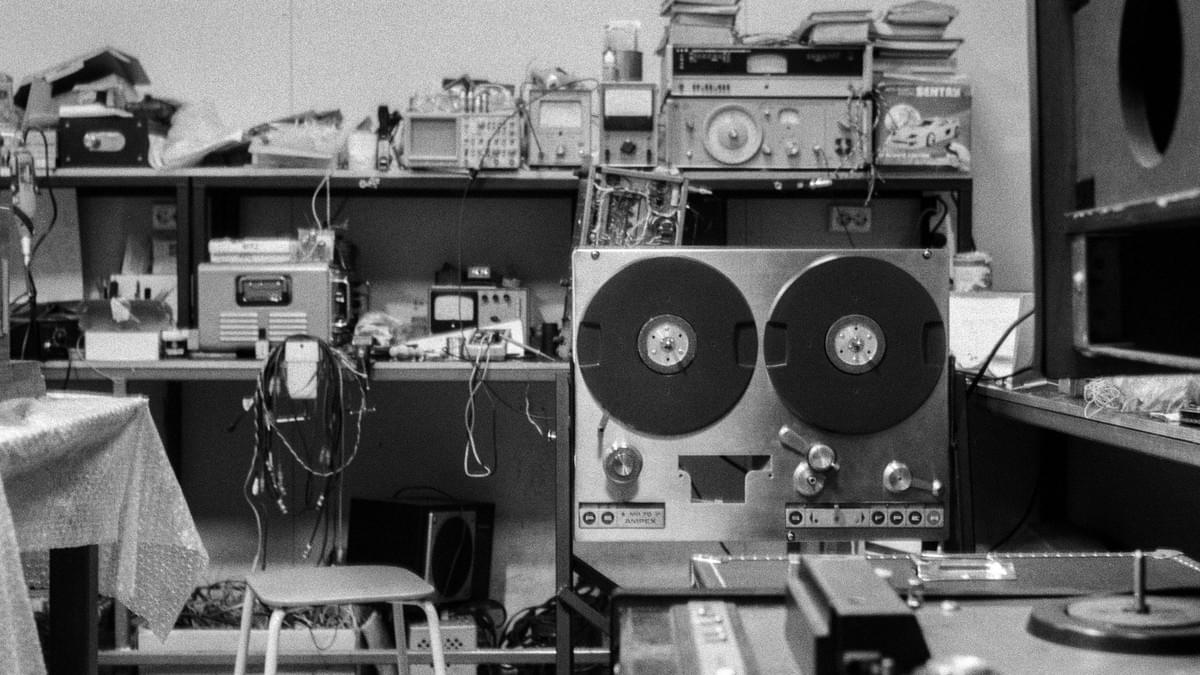What color grading is what transforms raw footage into the captivating, visually stunning stories. At Orwo Studios, as a film production services company we've witnessed the rise of film color grading. Our Louisiana facility is equipped with industry-leading tools. These systems enable our team of experts to deliver film color grading services, turning ordinary scenes into cinematic masterpieces.
This guide covers everything you need to know about color grading. Want to learn what is color grading in film? This is the only resource you'll need.
Understanding the Fundamentals: What is Color Grading

At its heart, color grading is about enhancing and stylizing the colors and overall look of filmed content. This is different from color correction, which focuses on fixing technical problems. Color grading, on the other hand, is an artistic process that involves understanding the color grading meaning behind every creative decision.
At Orwo Studios, our colorists are pros at turning raw footage into something that really pops. That means tweaking hue, brightness, contrast, and gamma correction to create a cohesive look that exemplifies what color grading in film is.
Directors like Wes Anderson and Christopher Nolan are examples of this. Anderson is known for his pastel colors, while Nolan often opts for a desaturated look. These styles are the result of deliberate film color grading decisions.
The Science Behind Color Grading
To understand what color grading is, you need to know the basics of how it works. Today's digital cameras usually capture images in RAW or LOG formats. When you first look at the footage, it's often flat and lacking in color, but that's intentional. It's meant to be tweaked and refined during post-production through professional film color grading.
The color grading process involves complicated technical steps. Colorists stick to specific color ranges. Our Barco projector, which meets DCI standards, and 30-seat cinema mean every grading choice looks perfect.
Film Color Grading Trends Shaping 2025

Color grading in film is evolving at an incredible pace. In 2025, we're seeing three big trends take center stage.
Hyper-realistic grading is all about creating a look that's genuine. Documentaries and narrative films really benefit from this approach. Even corporate content can feel more relatable when the color grading meaning focuses on authenticity.
On the opposite end of the spectrum, you have bold and moody aesthetics. This style packs a punch with its highly saturated colors and bold color choices. It's a staple in music videos and genre films. Our team of colorists are all about keeping the technical side on track.
HDR color grading is becoming increasingly popular. High Dynamic Range content needs specialized workflows to look its best across different screens.
The Creative Process: Film Color Grading Workflows
Professional film color grading involves workflows that help you get the most out of your creative vision. At Orwo Studios, we usually start with the technical side of things. That means understanding what color grading in film is at its core.
Our colorists team up with directors to get inside the project's emotional headspace. Warm colors can add a nostalgic feel to flashbacks, whereas cooler tones can create a tense atmosphere. This demonstrates the color grading meaning in storytelling.
Color grading gives you precise control over specific parts of the frame. With DaVinci Resolve, you can use advanced masking to isolate specific objects or areas. Then, you can adjust them without changing the whole image. This control lets you make subtle but powerful storytelling.
Secondary color correction is a crucial step in the film color grading process. Tools like power windows and qualifiers allow for targeted adjustments. At our film production services company, we have 12 editing suites, each with the processing power needed to handle complex secondary grading tasks.
Technical Requirements and Equipment

To get a handle on what is color grading, you need to know the equipment. The pros count on the best monitors.
Our grading suite at Orwo Studios has the latest gear and everything DaVinci Resolve Studio offers. These tools make it more accessible for all kinds of filmmakers to do color grading and also raise the bar for pro-grade work.
We have over 10 petabytes of storage, with 10 Gbit access on set. This lets us play back high-resolution RAW footage smoothly. Color grading these days needs serious hardware, especially for playing back 4K and 8K content.
How Much Do Color Graders Get Paid?
Color graders get paid based on their experience and the type of projects they work on. In the US, color graders make between $24,000 and $56,500 per year. More experienced pros tend to earn higher pay. Freelancers usually charge by the hour depending on how skilled they are.
How much color graders get paid can vary a lot depending on where they work and what they specialize in. Typically, entry-level jobs start around $24,000 a year. Senior colorists at big studios, on the other hand, can earn a lot more.
How much do color graders get paid also varies based on project scope and timeline. For indie films, the budget for color grading is around $5,000 to $15,000. But major studio productions spend a lot more. We can offer film color grading services at rates that make it possible for projects of all sizes to get professional color grading.
Where you live makes a big difference in how much do color graders get paid. Places like Los Angeles and New York pay more. On the other hand, Louisiana offers a great deal for productions that need professional film color grading.
Getting certified through organizations like the International Colorist Academy can impact how much color graders get paid.
Time Requirements: How Long Does Color Grading Take?
Planning a project means having realistic ideas about how long color grading takes. For a feature film, color grading usually takes 60-120 hours. This includes both the basic color correction and the more creative grading that defines what color grading is in film.
How long does color grading take for smaller projects really varies. A 3-5 minute short film usually takes around 2-8 hours to grade, while a 45-minute documentary can require 2-3 days. Orwo Studios has found this to be pretty standard across the industry.
How long does color grading take can get even more complicated when you add advanced techniques. Complex projects with extensive film color grading tend to take longer. That's why we always talk about how long color grading takes upfront, so we can create a realistic schedule.
If the footage is well-organized with consistent exposure, it goes a lot faster. But if the material is a mess, it takes a lot longer. The file format and codec you choose also affect processing time. For instance, RAW footage generally takes longer to process, which influences how long does color grading take.
Client input plays a big role in how long color grading takes. Projects are improved with input, but going back and forth can really slow things down.
Software and Tools for Modern Color Grading

You need to know your way around industry-standard software and tools to understand what color grading is. DaVinci Resolve Studio has become the go-to choice, offering a full range of color grading features.
Alternative software options include Adobe Premiere Pro's Lumetri Color panel and Avid's integrated color tools. At Orwo Studios, our DaVinci Resolve installation provides the power needed for any film color grading project.
Hardware acceleration is key to color grading. With today's GPUs, you can process complex grades in real time. Our setup is designed to handle demanding HDR and high-res projects that showcase color grading meaning at its finest.
Control surfaces take color grading to the next level. Many pro colorists prefer using dedicated panels over a mouse and keyboard, especially for making key color fixes.
Color Theory and Artistic Applications
Mastering color grading starts with color theory principles. These principles help you make aesthetic decisions that look great and demonstrate what is color grading in film. The color wheel is key, with its complementary relationships. Think of the popular orange-and-teal combo; it actually helps tell the story. These color relationships are based on how humans see and feel about colors.
Temperature and tint adjustments are the foundation of film color grading. Warm colors usually convey a sense of comfort or energy. Cool colors can evoke feelings of sadness or tranquility, or they can suggest a reliance on technology. Well-informed color choices can support the story and explain the color grading meaning.
Contrast and saturation go hand in hand. Horror movies often have desaturated colors, while romantic comedies tend to have more saturated looks. At our film production services company, our team works with directors to turn their creative ideas into a specific color grading style.
Key Takeaway
Knowing what is color grading all about lets filmmakers make informed decisions. At Orwo Studios, we're all about helping creators bring their vision to life with expert film color grading. Our experienced pros who know how to use color grading to create compelling visuals understand both the technical and creative aspects of what is color grading in film.
Color grading in film is getting more exciting. Getting the basics right is key to making your next project, big or small, indie or blockbuster, look its best.
Frequently Asked Questions

What is the difference between color correction and color grading?
Color correction takes care of technical issues like getting the white balance and exposure just right. Color grading is more about the creative side that demonstrates the meaning of color grading. At Orwo Studios, we usually start by fixing any technical issues, then move on to creative grading.
How much should I budget for professional film color grading?
Pay for color graders can vary a lot. Independent films usually budget between $5,000 and $15,000, while commercials often require between $2,000 and $8,000. Since we're based in Louisiana, we can offer competitive rates for film color grading.
What format should I deliver for color grading?
Shooting in RAW or LOG formats gives you the most flexibility for what is color grading in film. These formats keep the most color detail and dynamic range, which makes it easier. That being said, if you have some well-shot Rec. 709 footage, it can still grade nicely.
How do I prepare my project for color grading?
Keep your timeline tidy by getting rid of anything unnecessary. This helps your grader quickly see what you want and understand what is color grading for your specific project. It's also super helpful to include some reference images.
Can I do my own color grading instead of hiring professionals?
Modern software has made color grading more accessible to filmmakers. Professional colorists bring a level of expertise and creative know-how that demonstrates the true meaning of color grading. Investing in professional film color grading often pays off in the end.

